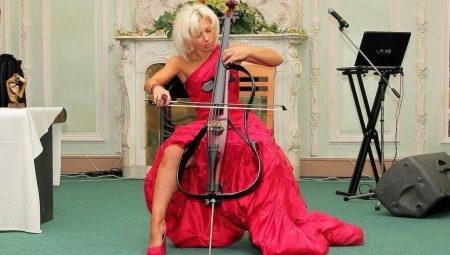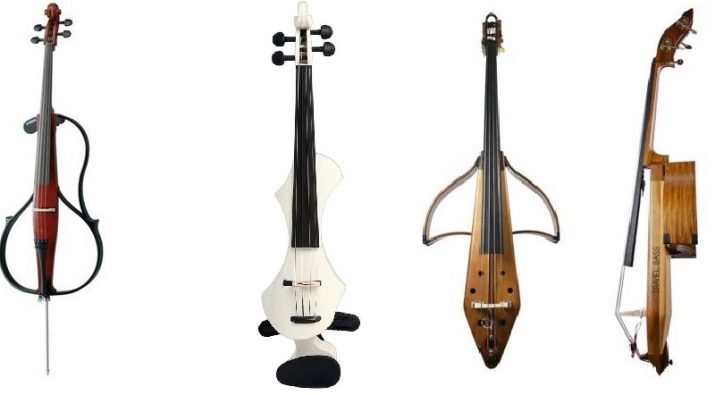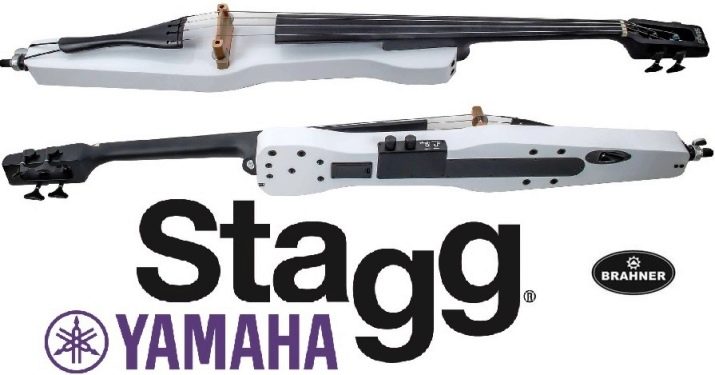Review of the musical instrument electric cello

A number of electronic musical instruments have recently been supplemented by another type - the electric cello. However, if earlier electric violins appeared and took root among musicians, then such an event was quite expected. True, in academic ensembles performing classical music, neither violins with pickups, nor cellos of the same kind have yet been used. They have found their application in less strict musical genres (folk, pop, rock, jazz).


Tool description
Brand models of electric cellos do not have a case, since several electronic devices perform its acoustic function here:
- pickupsconverting the sound of metal strings into an electrical signal;
- amplifierwhere the filtering and amplification of the power of the electrical signal coming from the pickups takes place;
- speakers (speakers), in which the electrical signal from the output of the amplifier is converted back into sound.
The unchanged components of the construction of an electric cello remain:
- neck with head and peg mechanism;
- stand;
- snare;
- strings;
- bow.
Some instruments are made with decorative elements in the form of the contour of the body (or half-body), similar to the usual - acoustic - cello.

A cello without a body has become much smaller in weight and more compact, it is more convenient to accommodate with it for playing music. However, to reproduce sound, the above electrical equipment is necessary, which sometimes has a considerable weight in the aggregate.
Sound
According to experts, the sounds of high-quality electrical analogs are very close to the sound of acoustic cellos. Besides, thanks to modern electronic technologies, there are ample opportunities to enrich the sound both in timbre and expressiveness, and in other characteristics.
Suffice it to recall the unusual sound effects of electric guitars, some of which can also be used for cello (by installing, for example, guitar pedals in the circuit for converting sound between pickups and amplifier).
Manufacturers
While musical instrument stores do not yet offer a variety of electronic cello models, interested musicians will find it useful to know which manufacturers are producing better models of these instruments.
First of all, the electric cellos of the Japanese brand stand out Yamaha... They are distinguished by traditional Japanese build flawlessness and electronics reliability for many years.
It is worth paying attention to the tools of companies Gewa and Stagg... Expensive models of power tools from these manufacturers are confirmed by attractive design and excellent sound quality.

Brahner's inexpensive tools are fine for training. The same brand also offers very serious models for high performing cellists, but the price will be much higher.
The price limits of different brands are quite wide: you can buy models for both 30,000 rubles and even lower, and for 200,000.
The most important thing is to choose an instrument not for the price, but for the sound. It should be as natural, powerful and deep (voluminous) as possible.
How to play?
The technique of playing an electric cello is no different from playing an ordinary instrument.: Sounds are played primarily with the right hand bow or fingers (pizzicato), the strings on the fretboard are gripped with the fingers of the left hand.
The landing of the musician is much more comfortable due to the lack of a rather voluminous body.... The instrument is supported in the same way as the acoustic model - on the spire. The whole difference, therefore, lies only in the ability to connect an electric cello to external devices - an amplifier and speakers, as well as in setting the sound strength based on the parameters of the room. But these operations do not present any difficulties.

There are many advantages to the electric model of the instrument, but only one nuance sets them apart significantly: it is impossible to hear the sounds of the instrument without connecting to acoustic equipment... Therefore, it might be worth thinking about the second version of the electric cello: to put sound pickup sensors on an acoustic instrument. You can rehearse without electronic devices, and play in front of the audience using electronics. In any case, the choice is up to the musician.








